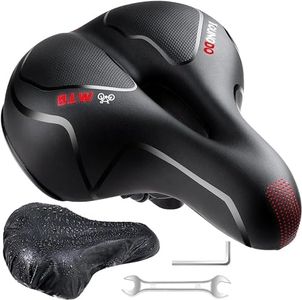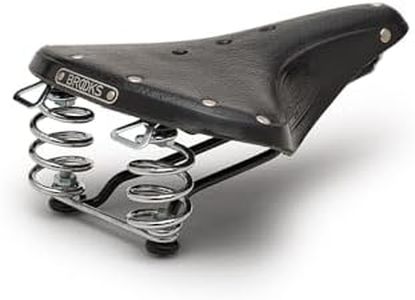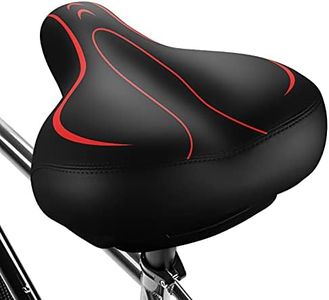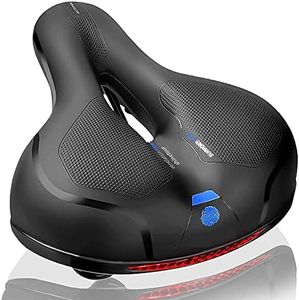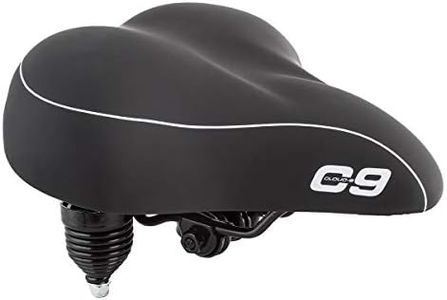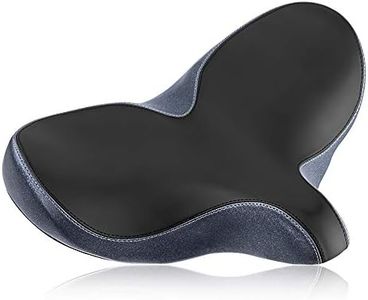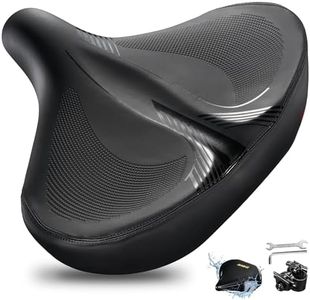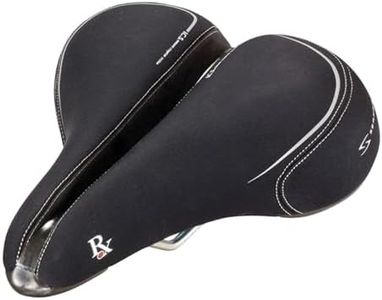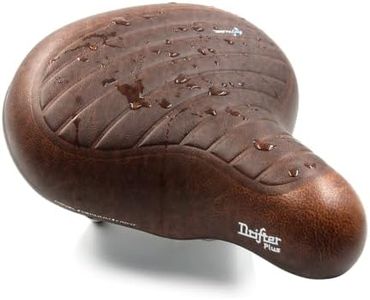We Use CookiesWe use cookies to enhance the security, performance,
functionality and for analytical and promotional activities. By continuing to browse this site you
are agreeing to our privacy policy
10 Best Bicycle Seat For Seniors
From leading brands and best sellers available on the web.Buying Guide for the Best Bicycle Seat For Seniors
Choosing the right bicycle seat is essential for seniors because comfort, support, and safety become even more important as we age. The right seat helps prevent discomfort, numbness, and potential injury, allowing for a more enjoyable and healthier cycling experience. It’s best to focus on a seat that matches your body type, your preferred type of cycling, and your need for pressure relief and support.Width and ShapeSeat width and overall shape are crucial for comfort, especially for seniors. Wider seats provide better support for the sit bones, which helps reduce pressure in sensitive areas and prevent discomfort during longer rides. Narrow seats might be fine for aggressive cyclists or racers, but for most seniors who prefer an upright riding position, a wider seat is ideal. Choose a seat wide enough to support your sit bones without rubbing your thighs—ideally, you should sit on it and feel even support without pressure points.
Padding and CushioningPadding refers to the layer of foam or gel that absorbs shock and increases comfort. More padding can make a seat feel softer, but too much padding may cause discomfort on longer rides due to sinking in and increased friction. For seniors, moderate gel padding is usually best, providing a mix of comfort and support for leisurely or casual riding. If you experience numbness, try a firmer seat; if you get sore quickly, look for a seat with more cushioning.
Suspension or SpringsSome bicycle seats for seniors include built-in springs or suspension. These features help absorb bumps from rough roads or trails, making the ride smoother and easier on your back and joints. If you often cycle on uneven surfaces, a seat with suspension or elastomer bumpers can be very helpful. For mostly flat or smooth paths, basic seats may be adequate.
Cutouts and Pressure Relief ChannelsPressure relief channels or cutouts are grooves or holes down the center of the seat designed to reduce pressure on sensitive areas, helping to prevent numbness and discomfort. Seniors who experience discomfort or tingling should look for seats with these features. Test a few types—the right cutout can make a big difference, but not everyone finds them comfortable, so personal preference is important.
Material and CoverSeat covers come in various materials, such as synthetic leather, genuine leather, or fabric. Synthetic options are usually more weather-resistant and easier to clean, while natural leather can shape itself to your body over time for improved comfort. Think about where and how you often ride—if you’re outside in all conditions, look for durable and water-resistant materials.
Mounting CompatibilityMounting refers to how the seat connects to your bike. Most modern seats fit standard seat posts, but it’s important to check compatibility so installation is simple and secure. If you’re replacing an old seat or upgrading, measure your current setup or ask for assistance to make sure your new seat attaches properly.
